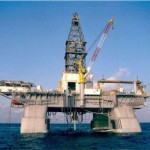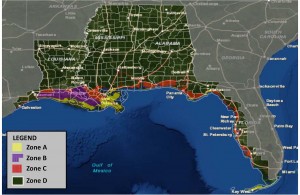The BP Oil Spill Court Approved Settlement Process
On April 20, 2010, a blowout, explosion, and fire occurred aboard the Deepwater Horizon, an offshore drilling rig, engaged in drilling activities on the “Macondo Well” off the coast of Louisiana. These events led to eleven deaths, dozens of injuries, and a massive discharge of oil into the Gulf of Mexico that continued for nearly three months.[1]
Hundreds of lawsuits with thousands of claimants involving British Petroleum (BP) were filed. On August 10, 2010, all federal lawsuits related to economic and property damages were centralized in (excluding securities suits) in the US DISTRICT COURT for the EASTERN DISTRICT OF LOUISIANA. The official name of the case: In Re: Oil Spill by the Oil Rig “Deepwater Horizon” in the Gulf of Mexico, on April 20, 2010
Settlement Agreement Approved by Judge Barbier
On December 21, 2012, US District Court Judge Barbier issued an Order approving a settlement agreement, applicable to most businesses in the covered area. The BP Settlement Program applies to all types of businesses, though many that may have claims have not pursued them. The settlement changed who qualifies for economic relief, and how claims are evaluated and compensated for direct or indirect economic losses in 2010.
THE DEEPWATER HORIZON BP OIL SETTLEMENT PROGRAM
The Deepwater Horizon Court-supervised Settlement Program is the court-run class action settlement program designed to compensate for losses resulting from the April 20, 2010 oil spill. The Settlement Program provides objective formulas to evaluate and compensate businesses and professionals for their direct or indirect economic losses incurred after the spill. (For specific questions about the Settlement Program, use the contact form at the end of this article.)
THE BASIC QUALIFICATION REQUIREMENTS
Requirement 1: A business in the covered states and counties.
Requirement 2: In business during the relevant time frames. (The time frames may vary with the provisions for start-ups and failed businesses)
The 1,200+ page settlement agreement defines many ways to qualify, based principally on geographic location and industry. Geography is defined by zones. There are varying financial calculations for qualification within each zone.
GEOGRAPHY COVERED BY THE BP SETTLEMENT AGREEMENT
The Settlement covers Louisiana, Mississippi, Alabama, and certain coastal counties in eastern Texas and western Florida,[2] and specified adjacent Gulf waters and bays. Generally, to be eligible, businesses must have conducted activities in the area during the period between April 20, 2010 and April 16, 2012.
EACH ZONE HAS DIFFERENT QUALIFYING REQUIREMENTS
In Zone A, largely comprised of barrier islands, there is no financial test to meet. Most businesses and individuals in Zone A automatically qualify. Zone C varies anywhere from 1 mile to approximately 20 miles inland. Zone D may be up to 325 miles inland. In Zones C and D the qualification calculations are different. While the entire states of Louisiana, Mississippi and Alabama are included, there are specific counties in Texas and Florida.[3]
The agreement is nuanced with many exceptions.[4] Given the complexity, claimants are well advised to consult with an attorney. This may begin with an Authority to Represent.
ELIGIBLE BUSINESS NEED NOT BE TIED TO TOURISM
Almost any business[5] located in a Florida Gulf Coast county, (from the panhandle to the Keys) the states of Alabama, Mississippi, Louisiana and select counties in TX, may be eligible. The business need not be tied to tourism, seafood or the Gulf in order to qualify. For businesses with multiple locations, there is a specific provision in the settlement agreement for “multi-facility entities.”[6]
NO PROOF NEEDED THAT BUSINESS LOSSES WERE CAUSED BY SPILL UNNEEDED
There is no need to show that the oil spill itself was related to damages.[7] The objective economic loss formulas do not require the traditional legal “cause”.[8]
NO CAP ON THE AMOUNT OF MONEY TO BE PAID IN CLAIMS
The amount of claims to be paid under the settlement agreement are not capped. Judge Barbier held a fairness hearing on November 8, 2012, and issued final approval on December 21, 2012. With that final approval BP became bound to pay all valid claims as determined by the settlement.[9]
CLAIMS NOT FILED BY THE DEADLINE ARE LOST
Claims must be filed prior to the deadline of April 22, 2014. Any claim covered by the settlement agreement not filed by that date, barring an extension by the Court, will forever be barred.
SETTLEMENT EXCLUDES CERTAIN INDUSTRIES
Most industries are eligible under the settlement. However, there are excluded industries:
- certain financial institutions
- gaming businesses (casinos, etc.)
- insurance entities, investment funds and financial vehicles
- defense contractors
- governmental entities
- any entity selling or marketing BP-branded fuel
- certain oil and gas concerns
- real estate developers
- businesses and individuals who released their claims through the GCCF.[10]
BUSINESSES THAT WERE DOWN FOR ALL OR PART OF 2010 MAY BE ELIGIBLE
The settlement contains provisions that may cover businesses that were not operational through all of 2010.[11] The system was created this way, given the difficulty of proving the relationship between business issues and the spill. The agreement is designed to take into account both the direct effects of the spill and indirect effects that would be hard for many businesses to prove by a traditional legal process.
THE NEED FOR PROFESSIONAL REVIEW OF FINANCIAL INFORMATION
Because of the complexity of the agreement, a cursory review of financial statements by business owners may result in the conclusion that they cannot participate. When a team of lawyers, CPA s and Chartered Financial Analysts review the same materials often six and seven-figure claims are identified. An appropriate team of professionals is advisable to determine the existence and value of any possible claim.
THE EVALUATION PROCESS AND CONTINGENCY FEES
A professional evaluation begins with an authorization to a law firm to represent the client’s interests in the BP Settlement Process. Once a client provides monthly profit-and-loss statements and related tax returns for the years 2007 through 2011,[12] that information is evaluated. The evaluation ideally includes both financial and legal professionals.
The first step is to determine if a valid claim exists. When the work is done for the client on a contingency basis, should the team determine no claim exists, the client will have no costs. If the evaluation indicates a valid claim, further work will be done to prepare and file the claim. In the event of an unsuccessful claim, the client owes nothing. For a successful claim, an agreed upon percentage of the paid claim will determine the professional fees.
TIME FRAMES INVOLVED IN THE CLAIM PROCESS
When an evaluation indicates a valid claim, the Settlement Program requires final documents. Upon receipt and preparation of the final documents, the claim is submitted to the court’s Claims Administrator. The administrator makes a finding and issues a Letter of Determination within one to two months. Currently payments are being made within four to six months following the Letter of Determination.
The Claims Administrator is expecting more than 800,000 claims. Claims are being handled on a first in/first out basis. As more claims are filed, the time line for payment may extend. With that in mind, it is better to file sooner rather than later.
BENEFITS OF LEGAL COUNSEL
This settlement is overseen by the United States Federal District Court in New Orleans. An individual is free to represent himself. This is called “pro se.” Without the assistance of legal and financial professionals, the risk of failing to maximize the value of a claim exists. This is a legal proceeding and the general rule of court is that “pro se” litigants are required to follow the same rules as those represented by counsel.
A recent Claims Administrator report highlighted the significant number of claims being denied outright or returned for deficiencies because they were prepared by individuals or inexperienced and unqualified non-lawyer para-professionals.[13]
Having an attorney also addresses many concerns about the confidentiality of financial information. Attorneys are bound by attorney-client privilege and confidentiality requirements.[14]
INDIVIDUAL QUESTIONS REGARDING THE BP OIL SPILL SETTLEMENT PROGRAM
If you have a particular question regarding the settlement program, feel free to use the Contact Form below for an answer.
[1]The Economic Recovery Group (ERG) is a law firm representing businesses and professionals who suffered direct or indirect economic losses after the April 20, 2010 BP oil spill. Representation is by contingency fee, meaning there are no expenses if there is no recovery. A completed Authorization to Represent begins the process.
[2]In Florida, the settlement includes all coastal counties from the Panhandle to the Keys.
[3]In Texas, the included counties are: Galveston, Jefferson, Chambers and Orange. In Florida the included counties are: : Bay, Calhoun, Charlotte, Citrus, Collier, Dixie, Escambia, Franklin, Gadsden, Gulf, Hernando, Hillsborough, Holmes, Jackson, Jefferson, Lee, Leon, Levy, Liberty, Manatee, Monroe, Okaloosa, Pasco, Pinellas, Santa Rosa, Sarasota, Taylor, Wakulla, Walton, and Washington.
[4]Most exceptions work to the benefit of the claimant.
[5]The definition of business includes non-profit institutions such as churches, veteran’s organizations and more.
[6]This provision addresses issues involved with businesses that have operations both inside and outside the defined geographic zones.
[7]Even businesses located well inland with little or no exposure to tourism, seafood or hospitality were impacted. Only through a forensic accounting analysis is this apparent. The trickle-down effect is clearly evident in almost every business’ books.
[8]The settlement includes an element of “causation”, but the definition is different from a traditional legal case. “Causation” for the settlement is a set of varying financial calculations and comparisons. The settlement is non-traditional, and created an objective financial measurement rather than having to link together a chain of events, as in a normal negligence claim.
[9]This is a critically important point. Many covered businesses have deferred filing claims believing that a limited fund exists. Extraordinarily good hearted citizens who are eligible have not filed thinking they would be taking funds from others who were more deeply affected by the spill than they. As the settlement requires BP to pay all valid claims, no party’s payment will affect the payment of another party.
[10]The Gulf Coast Claims Facility was previously considering claims for oil spill related matters. It is now closed, except for certain limited functions, but no new claims can be filed. Parties that did not sign a final Gulf Coast Claims Facility (GCCF) release prior to February 27, 2012 remain eligible. Those that have been previously denied by the GCCF may still participate in this process.
[11]There are special provisions for a Failed Business Economic Loss Claims and Failed Start-Up Business Economic Loss Claims that may come into play. These have restrictive qualification rules, but some may qualify.
[12]If business operations do not cover all those years, of course, only the periods of operation are needed. 2007 to 2011 are periods that may be used in calculations involving the claims process, and having the data for all years allowed can affect both eligibility and maximizing a claim’s value.
[13]There are many non-lawyer individuals indicating they are capable of preparing claims. As this is a legal court proceeding, there is a danger that many are engaging in the unauthorized practice of law, which can be a criminal offense with a potential penalty of time in prison.
[14] In addition, the Court recently issued an order mandating that financial information disclosed through this process be kept confidential.
By: David J Shestokas, Esq.
(312) 451-5550



